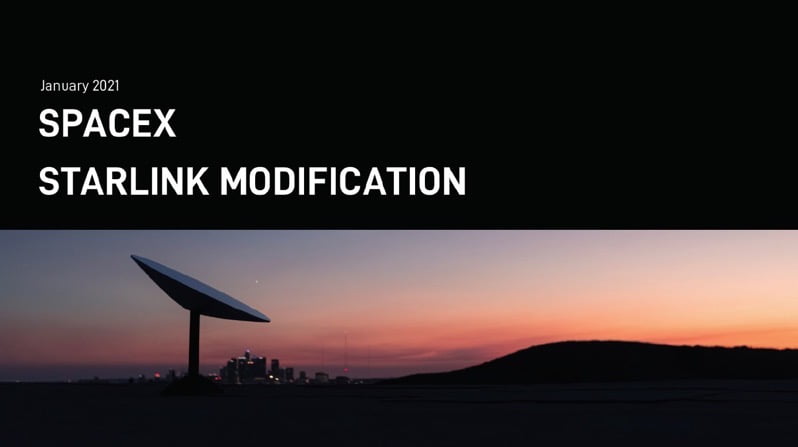
SpaceX Says Future Starlink Download Speeds to Hit 10 Gbps

Currently, SpaceX’s Starlink beta internet service offers download speeds of 100 Mbps or so for its beta testers in the U.S., Canada and the UK.
But what about future Starlink download speeds? According to SpaceX director David Goldman, in speaking with the FCC last week, the company outlined its plan to modify Starlink and its future plans, as noted by CNBC reporter Michael Sheetz (via Reddit).
Goldman outlined to the FCC the current 100 Mbps download speeds for Starlink will offer up to 10 Gbps in the future, which is a staggering goal and also much faster than what is currently available from internet service providers.
SpaceX says it plans to increase Starlink's download speeds from ~100 Mbps currently to 10 Gbps in the future: pic.twitter.com/PAxSbT1VD1
— Michael Sheetz (@thesheetztweetz) January 25, 2021
SpaceX plans to launch 120 satellites each month (essentially two launches of 60 satellites each) and as of his presentation, there were 955 Starlink satellites in orbit, launched from 15 missions.
If we add in the most recent Starlink mission 16 launch (60 satellites), plus the Transporter-1 launch (10 Starlink satellites to polar orbit), that means SpaceX now has sent 1,025 satellites into low-Earth orbit.
What else did SpaceX talk to the FCC about? Sheetz reports, “SpaceX dismissed Amazon’s $AMZN protest of the modification as “attempts to stifle competition”, saying Amazon makes “misleading claims of interference” and emphasizing that the competing Project Kuiper network represents “still nascent plans””.
“SpaceX also emphasized an “ongoing commitment to space safety,” saying its operations are transparent to other satellite operators, implemented automated collision avoidance, and Starlink satellites passively decay (i.e., fall out of orbit) faster due to “higher drag:””, reports Sheetz.
SpaceX also emphasized an "ongoing commitment to space safety," saying its operations are transparent to other satellite operators, implemented automated collision avoidance, and Starlink satellites passively decay (i.e., fall out of orbit) faster due to "higher drag:" pic.twitter.com/TT0obxzIr7
— Michael Sheetz (@thesheetztweetz) January 25, 2021
At this point in time, it appears SpaceX has a lead on its competitors such as Amazon, which can’t even get off the ground, but is rather spending time trying to take the wind out of Starlink’s sails.
Update–Elon Musk responded on Tuesday morning, adding “It does not serve the public to hamstring Starlink today for an Amazon satellite system that is at best several years away from operation.”
It does not serve the public to hamstring Starlink today for an Amazon satellite system that is at best several years away from operation
— Elon Musk (@elonmusk) January 26, 2021
You can read SpaceX’s full presentation to the FCC by downloading it here.
The next Starlink-17 mission is set for the early morning of January 29, from Launch Complex 39A, at Kennedy Space Center in Florida, with Falcon 9 again set to send 60 more satellites into space.

